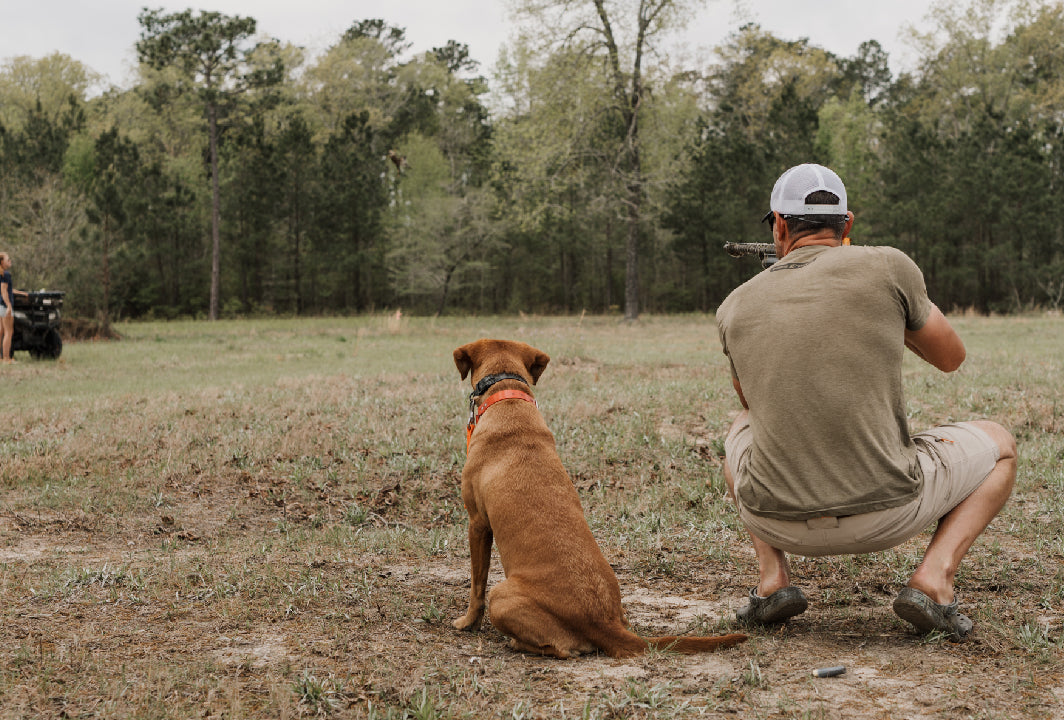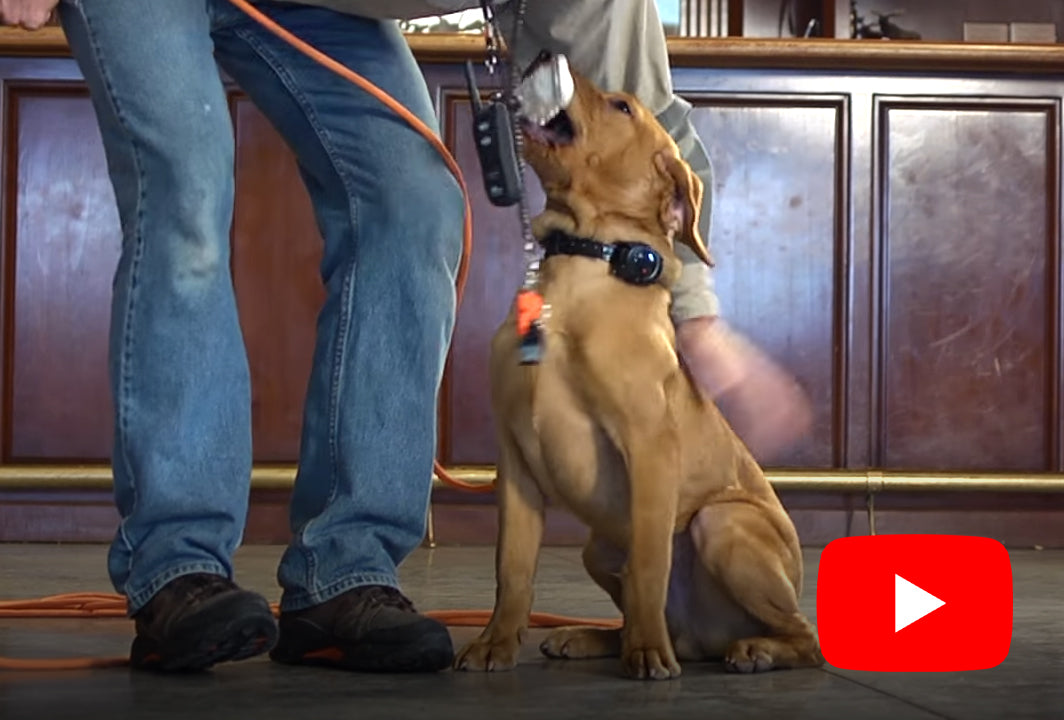How to Successfully Teach Your Dog to Be Steady
How to train your dog to be steady and ready for the distractions of a hunting field!

Does it seem like your dog is breaking away from you every chance he gets? When you get your dog outside, there are a lot of distractions and exciting things around for him. It's important that he learns how to remain steady by your side until you release him to go. You'll especially need your dog to be calm and patiently wait for your cue if you're in a hunting field. Working on steadiness is exactly what you need to prevent your retriever from breaking away from you!
How to Train Your Dog to Be Steady
Before beginning this training session, your dog will need to be trained in a few aspects. First of all, he should already have been taught the basis of steadiness before you go in-depth with it. Make sure that your dog is very consistent in his obedience to your commands. He should also already be e-collar trained and force-fetched trained. This means you should already be getting a good delivery from your dog!
For steadiness training, having an assistant is optimal, but you can also do it yourself. To begin training by yourself, give your dog the sit command, then toss the bumper a very short distance. If your dog instantly goes for the bumper, catch him and bring him back to you. If needed, go ahead and use your choke chain to reinforce the sit command.
Pick up the dummy and immediately take it away from your dog. It might take several repetitions, but don't send your dog until he is calm and focused. Make sure that his rear end is sitting all the way on the ground. As your dog becomes more consistent with staying, you can begin to throw the dummy further and give him more distractions. And remember, if your dog moves at any point, stop him with the lead!
Use the Correct Training Equipment
A really valuable aspect of this training is making sure that you are using the right equipment. This will make the training process much easier for you, especially since you'll be using quite a few pieces. Some important training equipment to use is a tab, which is a choke chain with a very short piece of rope on it. You can use whichever dummy works best for your dog; we recommend the DT Systems soft mouth bumper; it has a great effect on the dog's tendency to carry it properly.
Using an e-collar is important as well because you can strap the remote to your hand, enabling you to control your dog while still leaving your hands free to hold other training equipment! This way, you can hold the dummy and the rope at the same time and still be able to operate the collar. And remember, your dog should already be e-collar-conditioned and force-fetched!
Add in Intentional Distractions
Once your dog has mastered the basis of remaining steady at your side, you can add in some deliberate distractions. This helps train him to remain focused despite all the natural distractions in nature while hunting! You can begin by adding in some duck calling. After you've thrown your bumper, you can tell if he's actually steady by checking the tension on his choke chain. If there's no tension, that means he's truly steady and awaiting your command. Once he's calm and focused, go ahead and send him!
If you have a helper available, it's a great way to run the drill because it's the most efficient! You don't have to take the time to run out there and pick up the bumper. You can have your assistant do all the work while you just focus on handling the dog. Brief your assistant first so they know that when you give them a hand signal, they will toss the bumper towards you.
This makes it really tempting for your dog. During steady training, you want to create situations that purposefully tempt your dog to break. If your dog breaks, stop him with the tab and his e-collar. If your dog understands e-collar pressure, then repetition and taking away the retrieve really helps train him to be steady!
Tie His Leash Around a Stationary Object
Once your dog understands the concept of steadiness in the yard while you're holding onto the tab, tie a leash or a rope with a clasp on it to a nearby stationary object, such as a tree. Don't put a lot of slack in the rope—only about six inches, just enough so that your dog doesn't feel tension. You're using this tactic to allow yourself hands-free action. In other words, if your dog breaks, the rope tied to the tree or the stationary object is going to stop the dog for you.
Pick your bumper up and start over. Don't release your dog or give him the retrieve until he's calm. When he’s finally calm, take the leash off of the stationary object and hold the tab. This way, while you're taking the leash off, you've still got control of him. If he breaks, then you could stop him with the tab and start over again if your dog makes any mistakes.
Next, remove the tab and solely use the e-collar correction with a speaking command to reinforce it. You can use the sit command, rapidly followed by a nick if he moves and picks the bumper up!
Continue Training with Distractions
When your dog becomes trustworthy with the basic scenarios, you can add even more distracting and exciting retrieving scenarios! While you continue to add larger distractions, put the tab back on him and repeat the same general procedure that you do with the hand-thrown bumpers.
For higher-distraction equipment, we recommend using the DT Systems dummy launcher. This is powered by a 22-caliber load, making it nice and loud. It provides a very realistic mark and gun noise. As you do in the initial sequence where you are hand-throwing bumpers in the yard, when your dog becomes trusted with a long check cord affixed to a stationary object, you can take the tab off and let your dog run leash-free!
Keep practicing consistently and patiently, and soon you'll find your dog calm and composed while there are a lot of distractions. This means he's ready to take it to the field!




